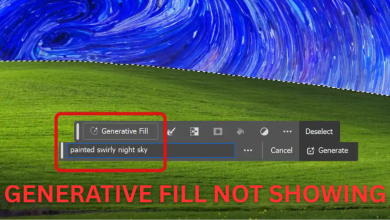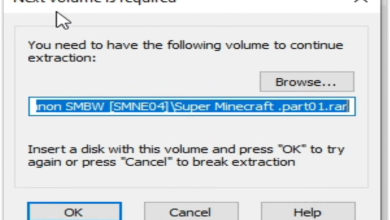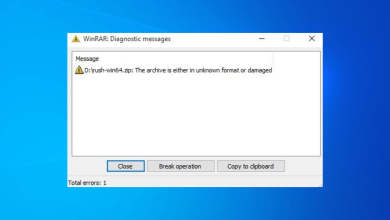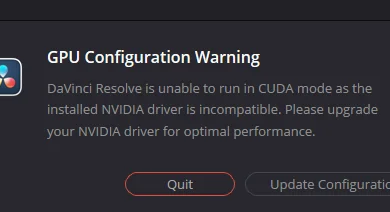How to Fix ‘NSC.exe – Bad Image’ Error in Norton?
Norton antivirus users may encounter an “NSC.exe Bad Image” error that prevents them from launching the application. This error can also appear during a scan, causing the process to be terminated.
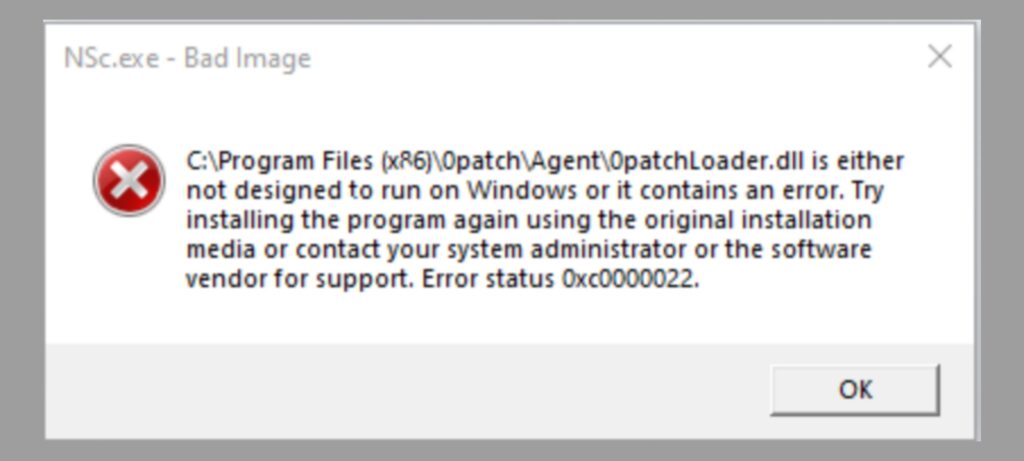
There are quite a few reasons why this error can occur. The main ones include runtime errors in Norton, a wrong installation, or an outdated version.
The easiest way to fix this issue is by running the LiveUpdate in Norton to update your antivirus to its latest version. Another way is to disable fast startup if you’re using Windows 8 or Windows 10.
There are two more methods apart from the ones mentioned above, and I will list the steps for all of them.
1. Run Norton Autofix
Norton Autofix detects and automatically fixes any problems with your Norton applications. It should be your first step whenever an NSC.exe error occurs.
Here’s how you can run it:
- Open your Norton application.
- Click ‘Open’ in the ‘My Norton’ window, next to ‘Device Security.’

- In the main window of the product, click Help.
- Now select Get Support.
- Now the Norton Autofix window will open, and the scan will begin.
- When the issue is resolved, click on Close.
2. Run Norton LiveUpdate
LiveUpdate is the option through which you can update your Norton products. Norton releases multiple patches for every version, and running LiveUpdate is the only way to install them.
If any of your Norton Security versions are displaying this error, then it is more likely that they are outdated. The bad image error primarily appears in v22.22.7.14, but it can also occur in the latest v22.23.5.106 if you haven’t installed the most recent patches.
Here’s how to run Norton LiveUpdate on different platforms:
On Windows
- Open Norton Security.
- Click LiveUpdate in the My Norton window under Device Security.
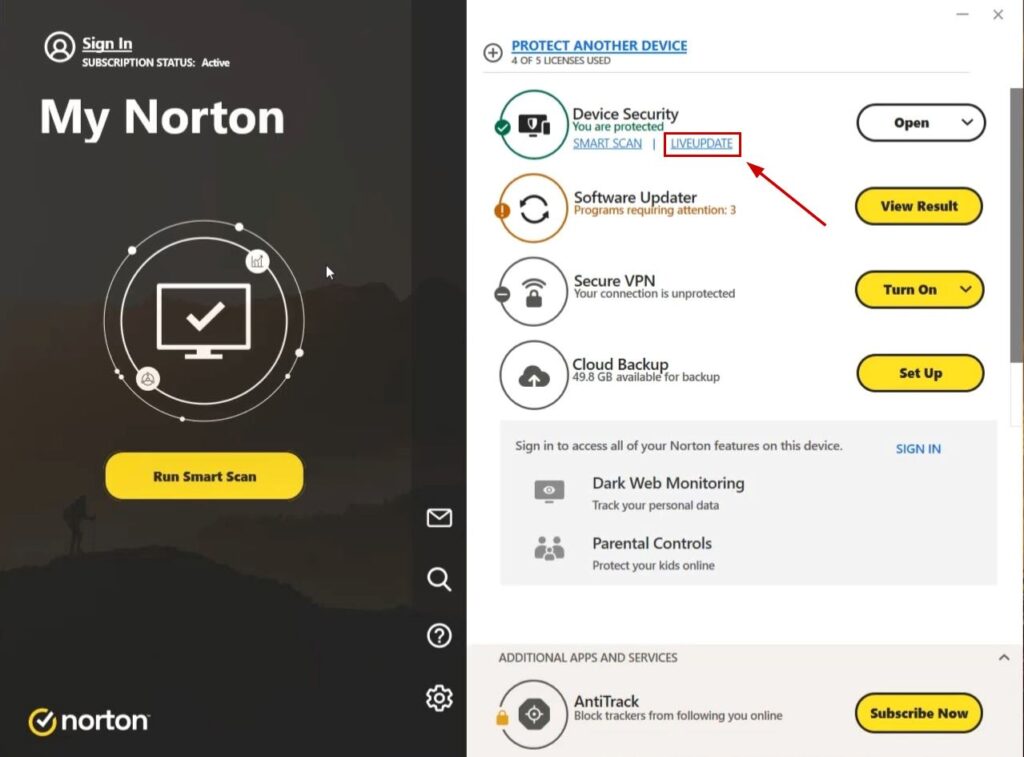
- Click OK after the LiveUpdate finishes.
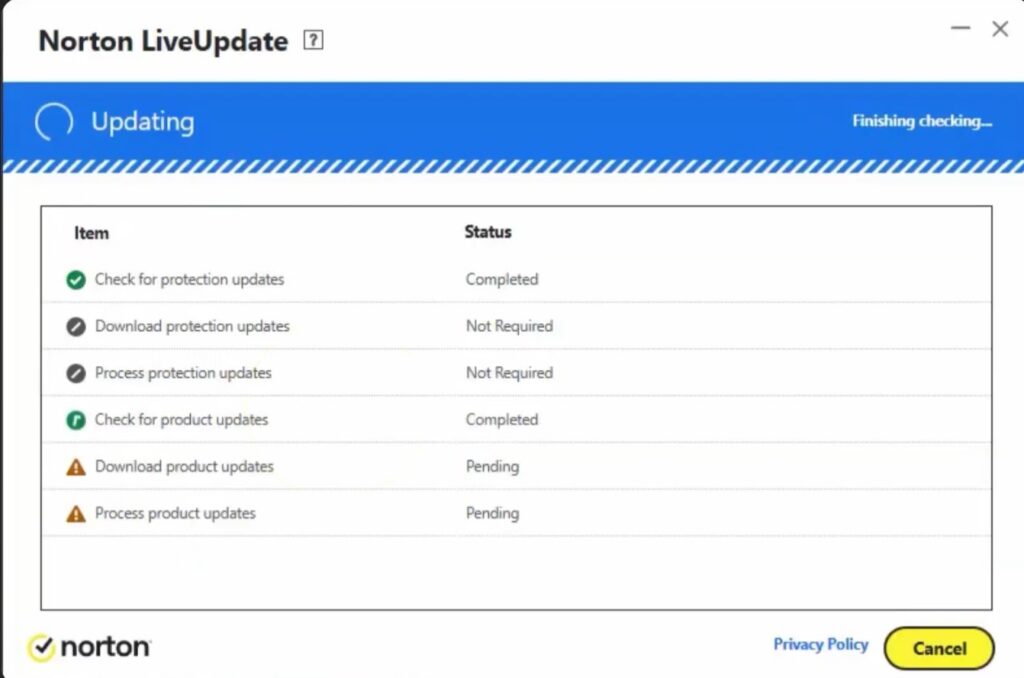
- If you don’t see the “Your Norton product has the latest updates” message, then run LiveUpdate until you do.
- Once it appears, close Norton and restart your PC.
Turn on Norton Automatic LiveUpdate (Windows)
If the Automatic LiveUpdate option is turned on, you will not have to worry about manually updating the application or encountering NSC.exe errors. All the new patches will install automatically once this option is enabled.
Here’s how to do that:
- Open Norton and click Open next to Device Security.
- In the main window, Go to Settings.
- Now navigate to Antivirus > Updates.
- Turn on the Automatic LiveUpdate option.
- Click on Apply.
- Click on Close.
On Mac
- Open Norton Security.
- Click LiveUpdate in the My Norton window next to or under Device Security.
- Once completed, click on View Summary and check the latest installed updates.
On Android
- Launch Norton 360 on your smartphone.
- Tap the three-lined menu icon on the top left.
- Tap on Run LiveUpdate under the LiveUpdate section.
On iOS
- Launch the App Store.
- Tap on your Profile icon.
- Tap Update next to Norton 360.
- Once the update finishes, launch the app.
3. Disable Fast Startup
Programs such as Norton Security and others require the system to completely shut down and restart in order for their running files to be updated. If fast startup is enabled, the system’s saved state will be loaded, and there won’t be a complete restart.
A brief method involves right-clicking on your Start Menu button and selecting Restart. This action will shut down the system and restart it without entering a hibernation state, which will help you update Norton and counter the NSC.exe errors.
Here are the steps to disable fast boot or startup in Windows 8/8.1 and 10:
- Open the Control Panel and select Large icons in the View by: menu.
- Click on the Power Options icon.

- On the left-side menu, select “Choose what the power buttons do”.
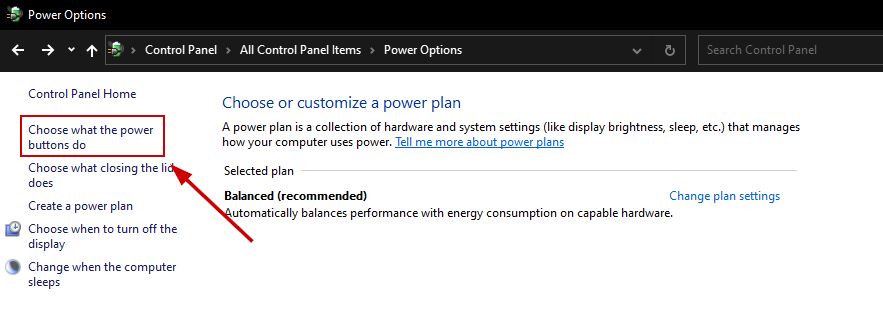
- Click on “Change Settings that are currently unavailable” under the Define power buttons section.
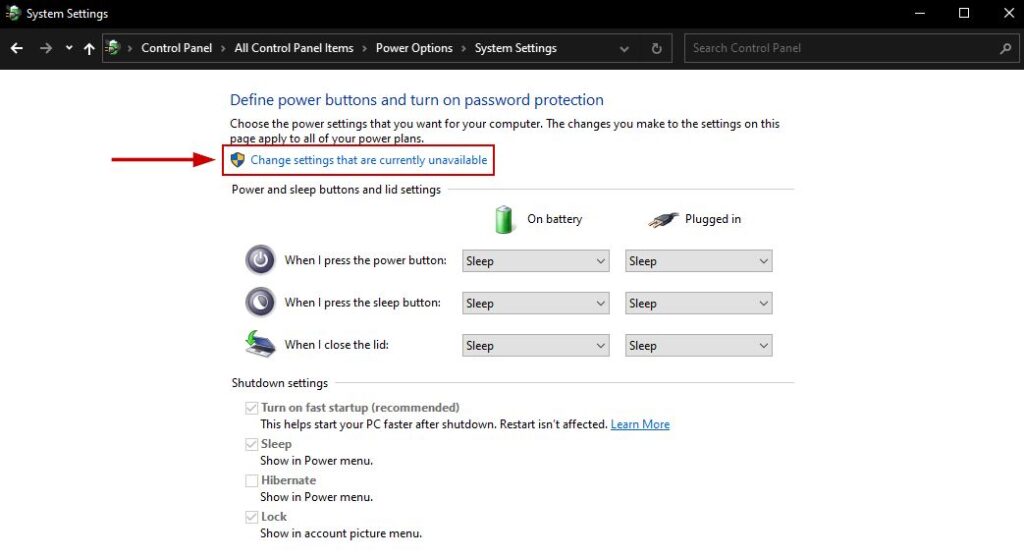
- Select Yes in the UAC prompt if it pops up.
- Uncheck the box that says “Turn on fast startup” under the Shutdown settings section.
- Finally, click on Save Changes and close the window.
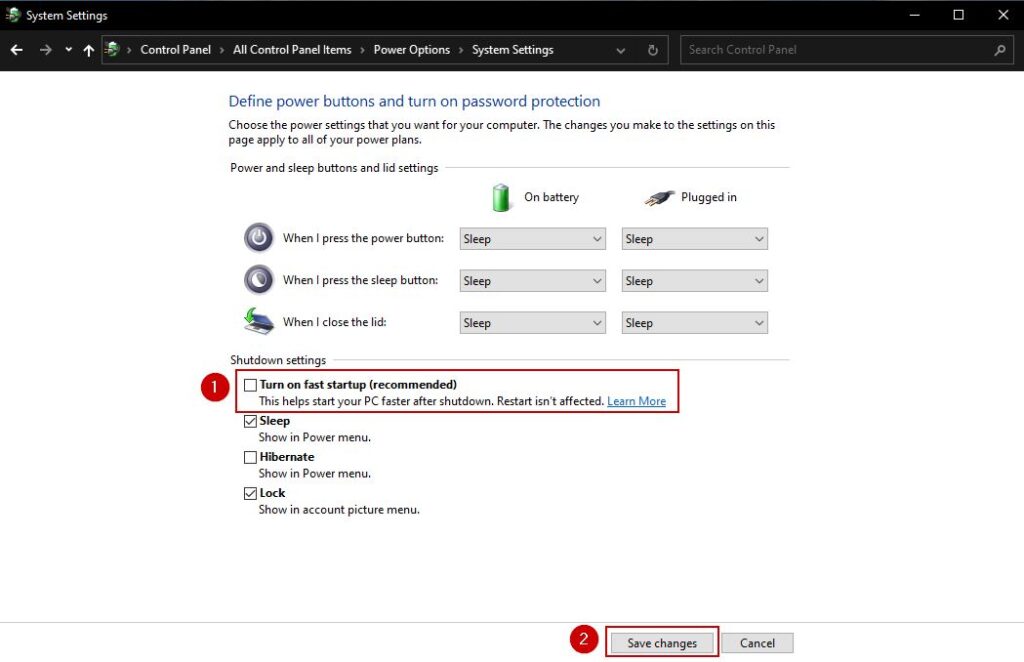
4. Run the SFC Scan
If the Norton error originates from a corrupted file, then running the SFC scan will automatically solve the problem. It will detect all the faulty files and fix or replace them.
The issue might be that some of your Norton files are not working properly, causing runtime errors to pop up. Therefore, it is always a good idea to run an SFC scan.
Here’s how to do that:
- Click on the Start menu.
- Type cmd.
- Select Run as Administrator to open the Command prompt.
- Paste the command below before hitting Enter:
SFC /scannow

- Afterward. wait for Windows to detect and fix the problems.
- Once done, close the command prompt window.
- Launch Norton again and see if the bad image error occurs again or not.
5. Disable 0patchLoaded.dll injection into NSC.exe
Disabling the injection of 0patchLoaded.dll will eliminate any errors displayed by the NSC executable file. One way to achieve this is by using the registry editor, but it can be more time-consuming. Therefore, as an alternative, below are the commands through which you can accomplish the same task:
- Open Command Prompt again with the Run as administrator option.
- Hit Enter after pasting each command:
reg add HKEY_LOCAL_MACHINE\SOFTWARE\0patch /v ExcludeModules /t REG_SZ /d "NSc.exe" /f
reg add HKEY_LOCAL_MACHINE\SOFTWARE\0patch\CallbackKeys\UnloadLoaderDll /v Counter /t REG_DWORD /d %random%%random% /f
net stop 0patchService
net start 0patchService
Lastly, open Norton again and you won’t see any error.
 Reviewed by
Reviewed by 